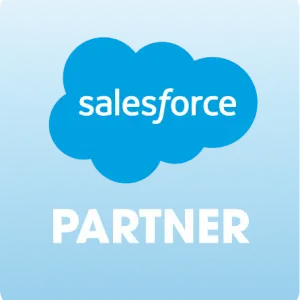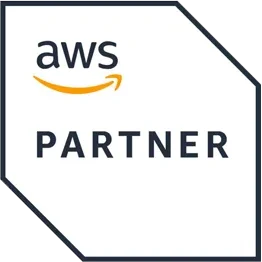What is an on premise license?

An on premise license is a software license that is installed and used locally. That is, in order to use the software, the user must install it on their own server or computer — and the software can then only be accessed and used through that server or device. “On premise licensing” is a colloquial term that evolved from the phrase “on-premises licensing,” referring to the location of the license and differentiating it from cloud-based licensing. It is sometimes also called “on-prem.”
Before the age of the Internet and cloud-based computing, on premise license models were all there was. If you wanted to install a program on your computer in the year 2000, you went to a computer store and bought a CD that contained the software and the license for your computer. That license was what we would call an on premise software license today.
With the increase in popularity of cloud-based and SaaS (software as a service) models, on premise licensing has become more rare. In 2018, 451 Research predicted that 90% of companies would be using some form of the cloud in the short term, and Cisco predicted that 94% of workloads would be processed by cloud data centers by 2021, with just 6% processed by traditional data centers.
Why has on premise software lost popularity? Does its decline mean that cloud-based models are better? The short answer is: not necessarily. Cloud-based models offer many advantages, but they have some drawbacks as well. Before we explore these, let’s gain a better understanding of the on premise model.
What is on premise software?
On premise software is a type of software that is installed and run directly on local devices. You install the software on your own computer, or on your company’s on-site server, and access it directly from there.
Remember: on premise software won’t always use an on premise license. You might use a type of software with a license key you’ve downloaded online.
What is the difference between cloud and on premise?
The fundamental difference between cloud and on premise is the location: where is the software installed and where is it run? If the answer is that it’s installed and run on a local device or server, it’s on premise. If it’s installed and run on a remote server accessed over the internet, it’s cloud-based.
This difference creates two software licensing models with distinct characteristics:
An on premise license:
- Is purchased once and then belongs to the owner perpetually
- Software must be manually maintained by the owner
- Software can be updated only if the owner purchases an update
- Is limited to the devices on which it can be physically installed
A cloud-based license:
- Is generally purchased through a subscription model
- Software is maintained and updated regularly by the provider
- Can be downloaded and activated from any device with internet access that can support the software

What are the advantages of on premise licensing?
While cloud-based licensing is generally more dynamic, flexible, and cost-effective, it’s not always the right model for a given software vendor. Here are some of the unique advantages of on premise license models:
- Better security: With an on premise license, the data the customer enters into the software stays on their local device or server and isn’t sent to a third party. This gives them more control over the data and makes it easier to protect it.
- Easier compliance: Complying with data protection regulations can be complicated enough when you’re only dealing with your local laws and requirements. If the remote server that hosts the cloud service is located in another country, it may be subject to different regulations, and that can make compliance even more complicated.
- No reliance on external providers or internet connection: Since the applications are all internal, there’s no need to involve external entities or to have an internet connection to use the program. This can be a significant advantage for employees who need to use the software in remote locations where the internet connection may be unstable or nonexistent.
- Faster processing: When the data doesn’t need to go back and forth between remote servers, it can be processed more quickly.
- More control: Customers who purchase the software have more control over the software itself and the data they enter into it. They are the ones who maintain the software and integrate it with their existing systems.
- Deeper integration: Speaking of integration, the fact that the customer owns the software means they can integrate it more deeply into their infrastructure and link it with additional software they’re using.
- Buy once: Subscription-based models generally cost less in the long run, but they mean incurring an ongoing expense that might increase over time. An on premise license requires a bigger investment overall, but it’s all up-front, and that makes it more predictable… except when it doesn’t (see below).
What are the disadvantages of on premise licensing?
All that said, there are some pretty good reasons that the general trend across industries is to move to cloud-based license models. Here are the disadvantages of on premise licensing:
- The race against obsolescence: When you buy software, you need to be sure that your hardware is compatible with it. Given the dizzying pace at which technology is evolving these days, this can be a significant challenge. The customer may end up in a few years with software that no longer works on high-quality computers and for which support has been discontinued.
- Storage limitations: If all data is being stored on your own devices or servers, your storage is limited to the amount of space you have on site. Cloud-based services give you access to much more storage space.
- Investment of time and effort: Keeping the software updated, stable, and error-free will be keeping the customer’s IT team pretty busy. The customer is responsible for ongoing maintenance of the software.
- Up-front costs: The customer will need to purchase enough licenses for all the devices they’ll be using the software on, and they’re usually limited to a certain number. Purchasing the software can be a significant up-front expense.
- Overall costs: Though it may seem that purchasing the software once rather than paying for it continually as a subscription will save you money in the long run, in most cases, it actually won’t. The software will need to be updated and adapted over time, and that maintenance will also incur ongoing costs.
- Physical limitations: On premise software licenses often rely on physical objects, such as USB keys, and these can get lost and be expensive to replace.
How does on premise work?

It depends on the software and the vendor, but the general idea is that on premise software licenses are installed on your local device or server. The license information might be included in a USB key or dongle that you need to plug in to use the program. Once the program is installed and the license has been activated, you use the program independently and no internet connection is required to run it.
How do you know if on premise licensing is the right model for your company?
Given the pros and cons of each model, it may not be clear which one is right for your company. When cloud-based models were first introduced, companies were wary of them because of two primary issues: the speed of uploading and processing large amounts of data, and security concerns.
However, technology continues to move forward and address these issues. Internet speed has greatly improved, making it possible to upload much larger amounts of data in shorter amounts of time. Cybersecurity has also made great leaps in the past decade or two, making it safer and more secure than ever to store your data on the cloud.
That’s why many companies that may have been hesitant to embrace cloud-based licensing in the past have begun to shift away from on premise license models.
However, some concerns about cloud-based licensing are still valid. Companies for whom security is a major issue, or who must comply with complex data protection regulations — the finance or healthcare sectors, for example — may still benefit from on premise licensing.
If your company:
- Processes and stores sensitive data
- Processes very large amounts of data
- Is subject to complex or strict data protection regulations
On premise licensing may be the way to go.
Why not both? The hybrid cloud model
The good news is, you don’t necessarily have to choose one or the other. Sometimes, a mix of cloud-based and on premise licensing is the most lucrative, cost-effective, and secure solution for a company.
The hybrid cloud model combines the benefits of cloud licensing with the security and stability of on premise. The disadvantage of this approach lies in its complexity — which is why it’s best to outsource it to a company that specializes in license management and monetization, such as Thales Sentinel.
Let the experts handle it
Thales Sentinel can help you evaluate whether cloud-based, hybrid, or on-premise license models are the best fit for your company’s needs. The licensing management solutions Thales Sentinel provides will integrate perfectly with your company’s infrastructure and make it easy for you to protect your software, increase revenue, and improve customer satisfaction.
If on premise licensing or a hybrid model is the right choice for your company, Sentinel LDK might just be the perfect solution you’re looking for.

Create Recurring Revenue with Software Licensing - White Paper
Higher Revenue, Happier Customers Part 1: Creating a Software Licensing Win-Win with Recurring Revenue: We live in a customer-centric, software and services-focused world. Customers are now driving decision making, and they increasingly expect immediate access and value...

Flexible Software Licensing helps Reduce Costs - Eocortex Case Study
How Eocortex Reduced Costs and Improved User Experience with Sentinel Even Security Surveillance Software Needs Flexible Licensing Security Eocortex’s innovative and customizable security solutions include some of the most advanced features on the global video ...



